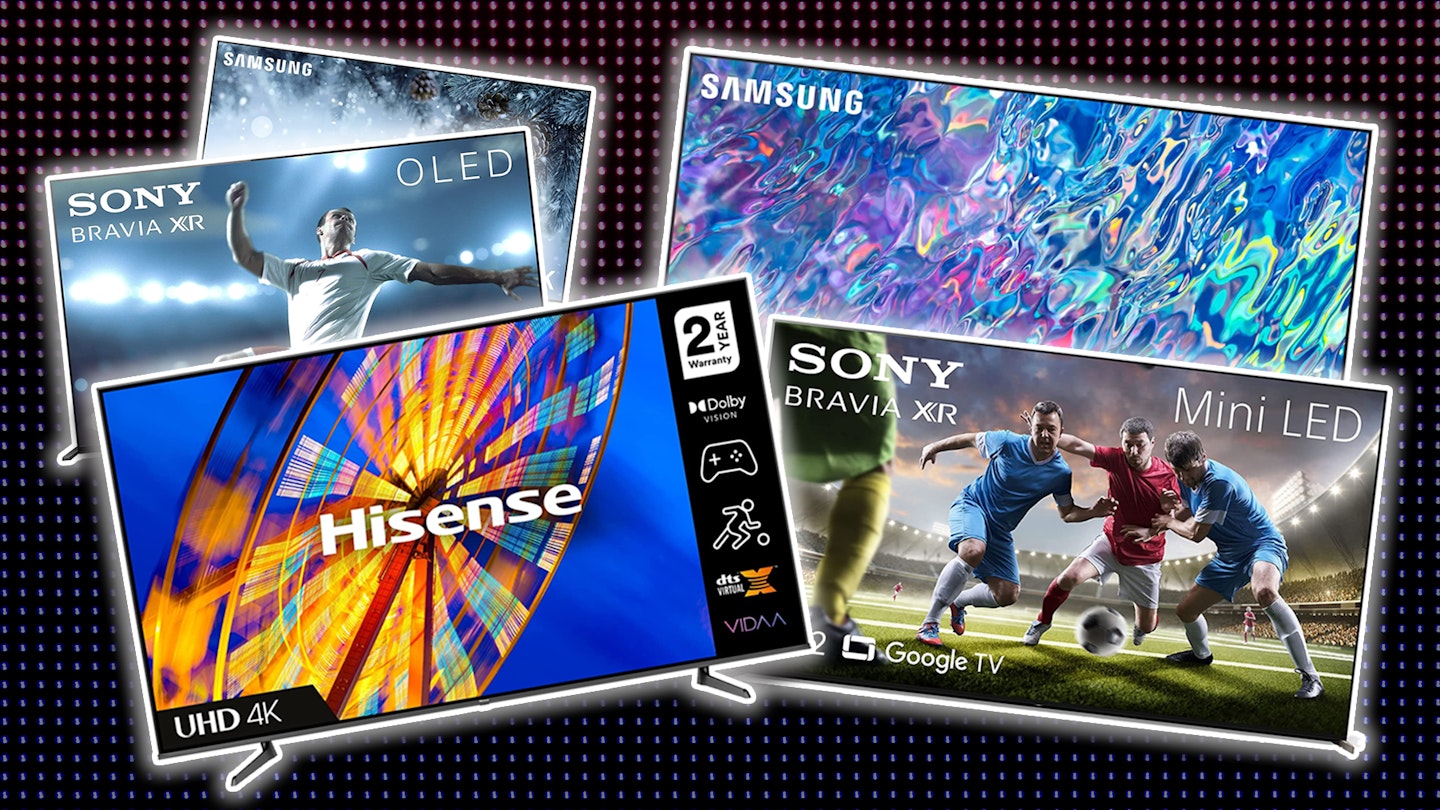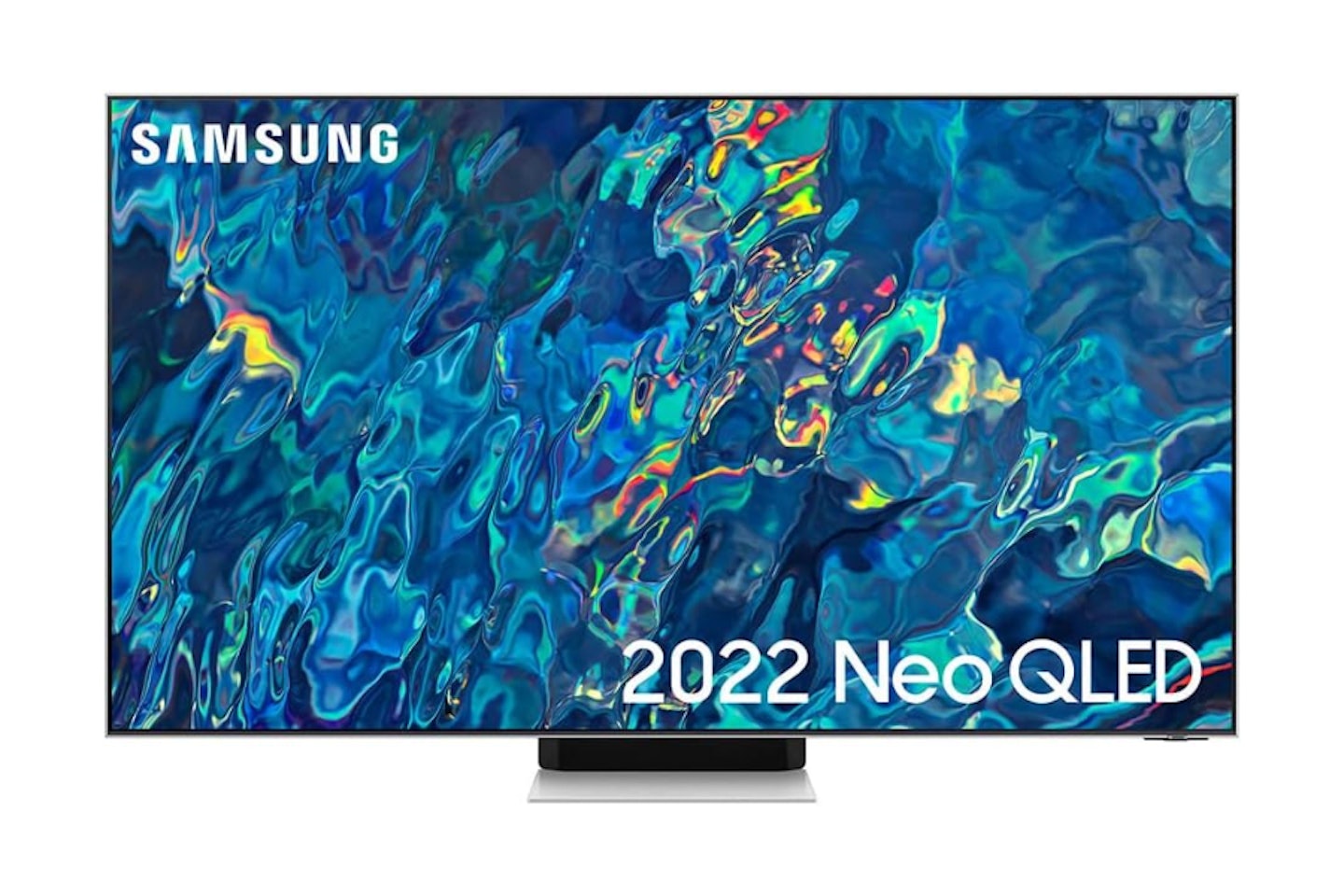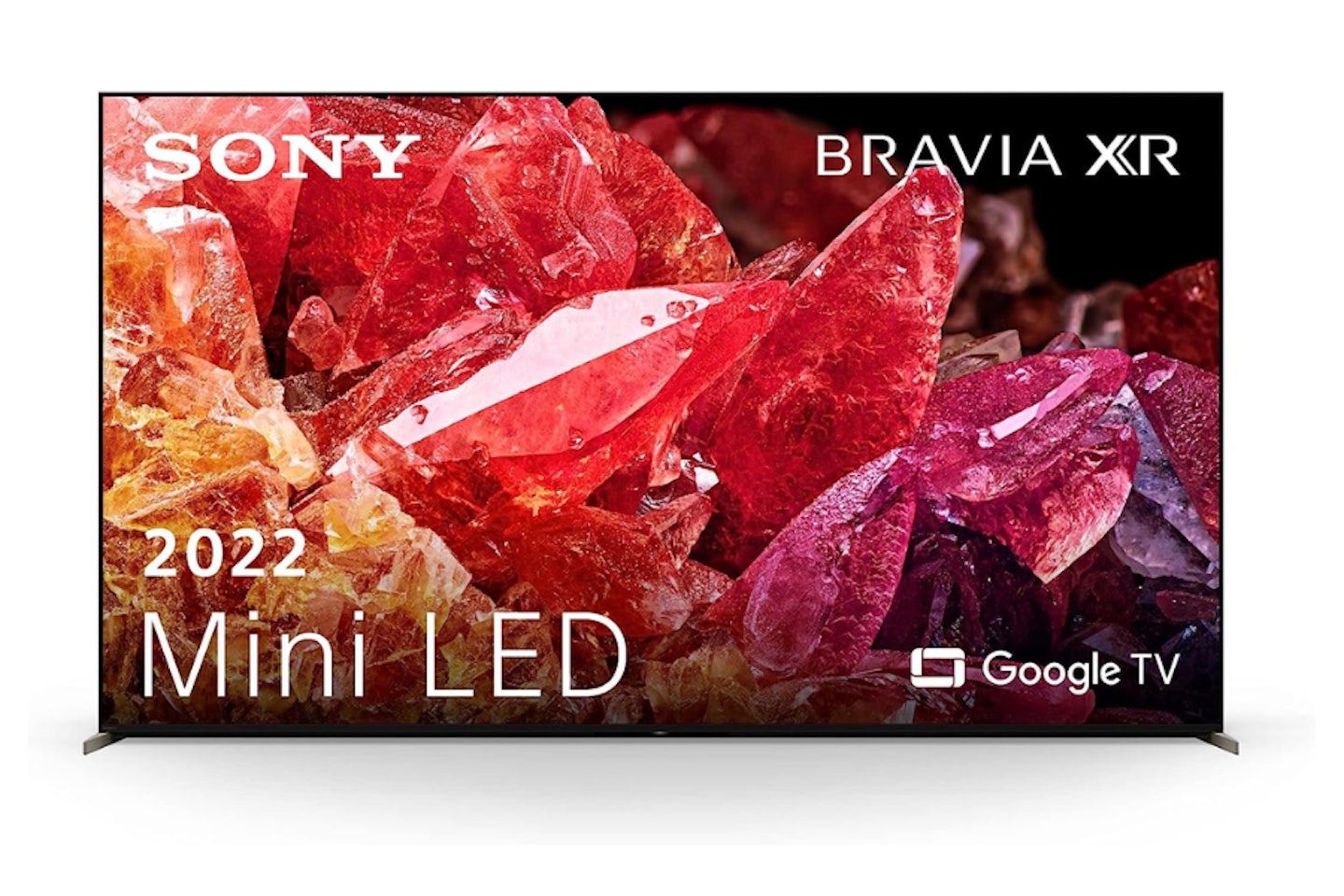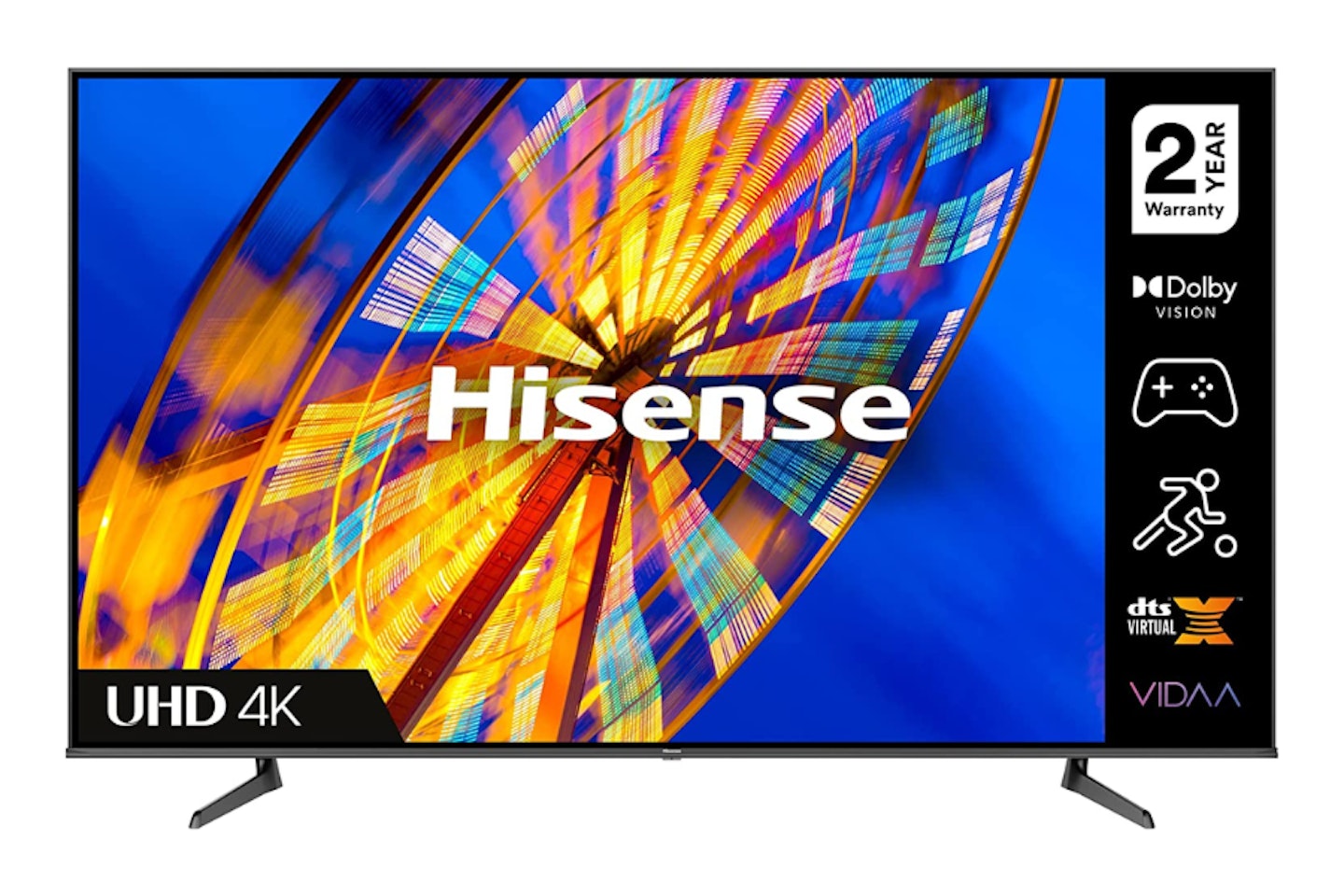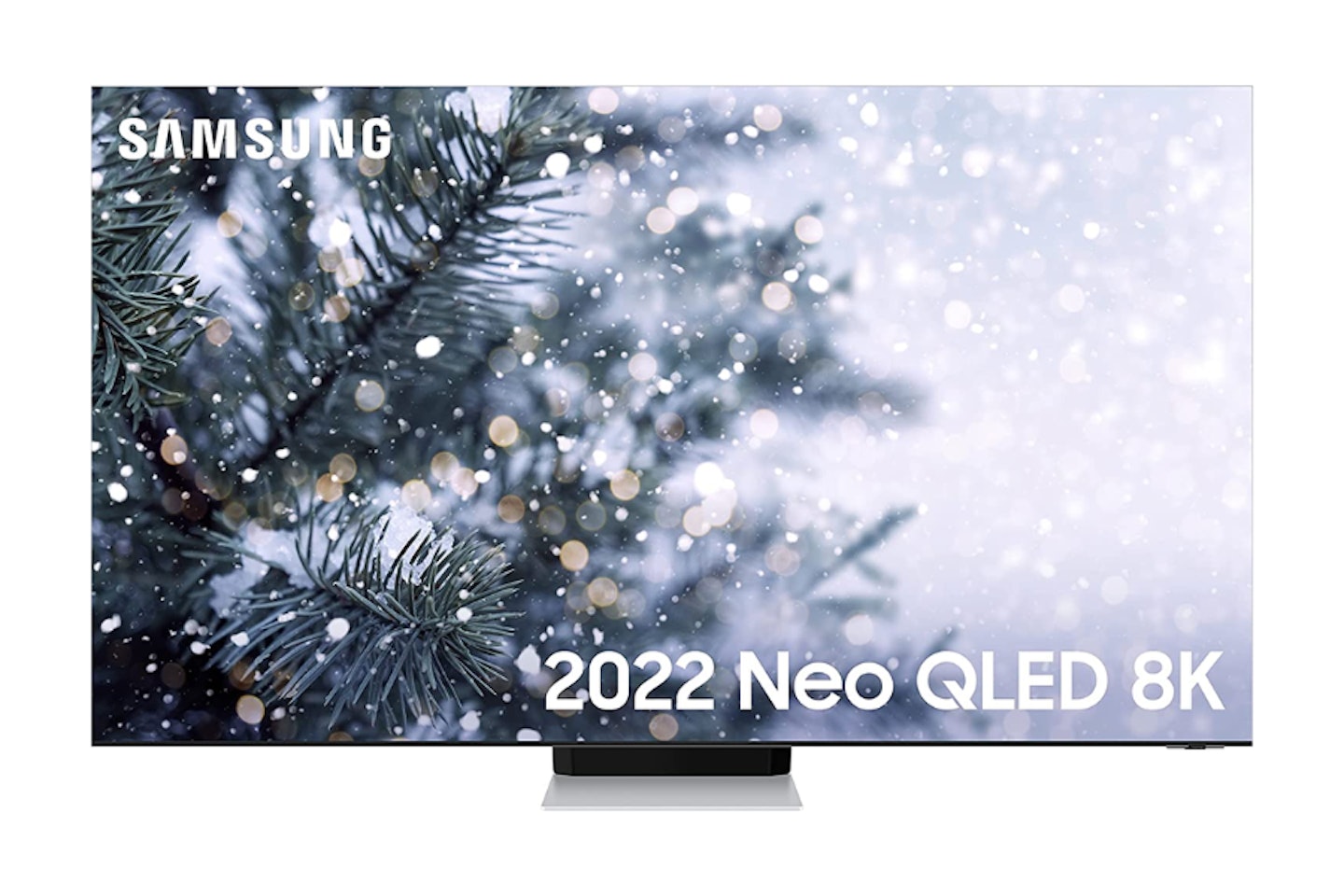Remember the first time you saw a quality TV screen larger than 32 inches? It was probably love at first sight, swept off your feet by the sheer scale of the picture. We’ve all been there. But today’s biggest and best 85-inch TVs are the eighth wonder of the world by comparison. Let’s get a sense of just how large an 85-inch TV is. It’s the same width as a Mini Clubman. Now, if it’s crossed your mind that your Mini could be parked inside your living room, that probably means you could fit one of these gargantuan beauties on the wall.
Size isn’t everything of course. Firstly, your TV will need some pretty impressive internal gadgetry to do justice to a screen that large. Beyond your panel choice - QLED, LED and a few others - the biggest picture improvement that most 4K TVs bring is upscaling. So, your old DVDs or even HD Blu-ray discs will look fantastic on an 85” screen, especially when the upscaling is AI-driven to pull out and enhance missing detail. But, which one is right for you?
The best 85-inch TVs of 2023 at a glance
• The best overall 85-inch TV: Samsung 85 Inch QN95B Neo QLED 4K Smart TV (2022) - View at Amazon
• The best budget 85-inch TV: Hisense 85A6BTUK (85 Inch) 4K UHD Smart TV - View at Amazon
• The best 85-inch TV for gaming: Sony Bravia XR-85X95K - View at Amazon
• The best OLED 85-inch TV: Sony Bravia XR OLED XR83A90J - View at Currys
If you’re serious about a screen this big, you’ll probably be bracing yourself for a serious hit to your bank balance. And you’d be right. Even going a little smaller, down to one of the best 75-inch TVs, won't save you much cash either. Any TV this large that’s actually worth having is never going to be ‘on special’ at the local supermarket. A budget TV this is not. But at least you can expect some serious high-tech perks when you’re shopping for a monster this size.
We’ve put together our pick of the best below, and if you’re new to TV terminology there’s a buyer’s guide at the end of the article. So, if you're ready to enter a world of total big-screen TV immersion, let the battle of the best 85-inch TV behemoths begin.
The best 85-inch TVs of 2023:
Best overall 85-inch TV
If you want your shiny new 85-inch TV to have as many features crammed into it as possible, this is it. But first things first: the screen itself. It’s a Neo QLED model. This means it delivers extra brightness than its slightly more costly OLED and standard QLED rivals. That also means a broader rendition of the HDR10+ colour palette, thanks to the extra light available. But, even better than that, you’ll also find Quantum Matrix Technology behind the screen. Yet another evolution in Samsung’s Neo QLED models, this helps with precise control over the light behind each pixel - effectively closing the gap between QLEDs and OLEDs where contrast and black levels are concerned.
All of this pictorial goodness is driven by Samsung’s Neo Quantum Processor 4K. This AI-powered tech cleverly analyses and enhances your image on the fly. For gamers and sports fans, there’s a 120hz variable refresh rate and AMD FreeSync Premium Pro for gaming free from screen-tearing. Motion blur is expertly dealt with by the inclusion of Motion Xcelerator Turbo+. For TV and movie watchers, the usual Samsung extras include smart apps, plus Google, Bixby and Alexa voice assistants for stressless control.
Sound is equally well-catered for in the QN85B. Apart from Dolby Atmos for a stellar room-filling soundscape, if you also have a soundbar this 85-inch TV will let you team them up. Q-Symphony pairs your six multi-directional TV speakers with your soundbar for combined output. As with most of Samsung’s top-of-the-range sets, this also has Object Tracking Sound+. This will effectively make important sounds, like dialogue, sound as though it’s originating from the person speaking. It’s a wonderful immersion-enhancing effect that adds subtle but effective realism. If you can fit this into your living room, don’t hesitate, it’s a brilliant piece of kit all-round.
Pros
- Incredible picture quality and resolution
- Cutting-edge Samsung tech
- HDR10+
Cons
- No Dolby Vision is a surprise at this level
The best 85-inch TV for gaming
Mini LED screens are a great TV choice for gamers. To bolster the brilliant 120hz variable refresh rate, the move away from OLED here means no risk of the dreaded screen burn (from static in-game graphics like logos and HUDs). However, the obvious downside of this panel tech is that it’s backlit - so although Mini LED has finer control over its dimming zones, it won’t compete with the absolute-off state of OLEDs for inky blacks; but this is a small price to pay for gaming peace of mind.
To top it all, Sony has jam-packed this 85-inch wonder with the very best from its technical repertoire. We have Cognitive Processor XR for enhanced picture detail, TRILUMINOS Pro and XR Motion Clarity for more colour and less motion blur. And let’s not forget XR 4K Upscaling and voice control. There’s Sony’s own BRAVIA CORE - its hub for apps and streaming media. Sound is piped into the room through six in-built speakers with Dolby Atmos.
As you’d expect from a Sony product, this has the ‘Perfect for PlayStation 5’ feature set. This brings enhancements like Auto HDR Tone Mapping and Auto Genre Picture Mode to make your PS5 gaming sessions look even more impressive. There’s Nvidia’s G-Sync tech for reducing screen-tearing and stuttering during gameplay. If you’re an Xbox player or a fan of any other console, you’ll still love gaming on this TV. With super-low input lag and fast response times, you’ll be beating the competition on the best 85-inch gaming TV that your in-game cash (unfortunately) can’t buy. If you like Sony but not the 85-inch price tag, we have more to choose from in our run-down of the best Sony TVs.
Pros
- Gorgeous screen for brightness and rich HDR colours
- Perfect variable refresh rate
- Dolby Vision
- Dolby Atmos
- Nvidia G-sync
Cons
- No Dolby Atmos (but not expected)
- No HDR10+
- Dolby Vision only supported up to 4k / 60Hz on Xbox Series X
- Some light bleed on blacks and mid-tones due to Mini LED backlighting
The best affordable 85-inch TV
Hisense is fast becoming a TV brand to keep an eye on. It would be easy to imagine that a name associated with great value for money wouldn’t necessarily brand out with 4K UHD screens as large as this. And they really have pushed the boat out in terms of picture quality and features. Just look at the list of sound and vision wizardry: Dolby Vision HDR for the widest colour palette, DTS Virtual X sound for immersive and clear sound; dedicated Sports and Game modes that adjust picture and sound settings depending on what you’re watching.
This 85-inch TV will, like most high-end models, intelligently upscale lower resolutions to 4K. That said, one reason this TV is so affordable is Hisense’s choice of screen technology - its standard LED running at 60hz. While that won’t affect resolution or colour range, it won’t have blacks or mid-tones as deep as its more expensive OLED and QLED rivals. The same goes for the 60hz fixed refresh rate - which may prove an issue for hardcore gamers. On the plus side, there’s Alexa built-in for voice control, as well as a plethora of smart TV apps. You can even watch and catch up on live broadcast TV with Freeview Play, making this TV an excellent budget choice for everyday viewing.
Pros
- HDR10+ support is an unexpected addition at this price point
- Dolby Vision HDR
Cons
- Refresh rate is not variable
- No Dolby Atmos (but not expected at this price point)
- The LED panel at 60hz may underwhelm some
Best OLED 85-inch TV
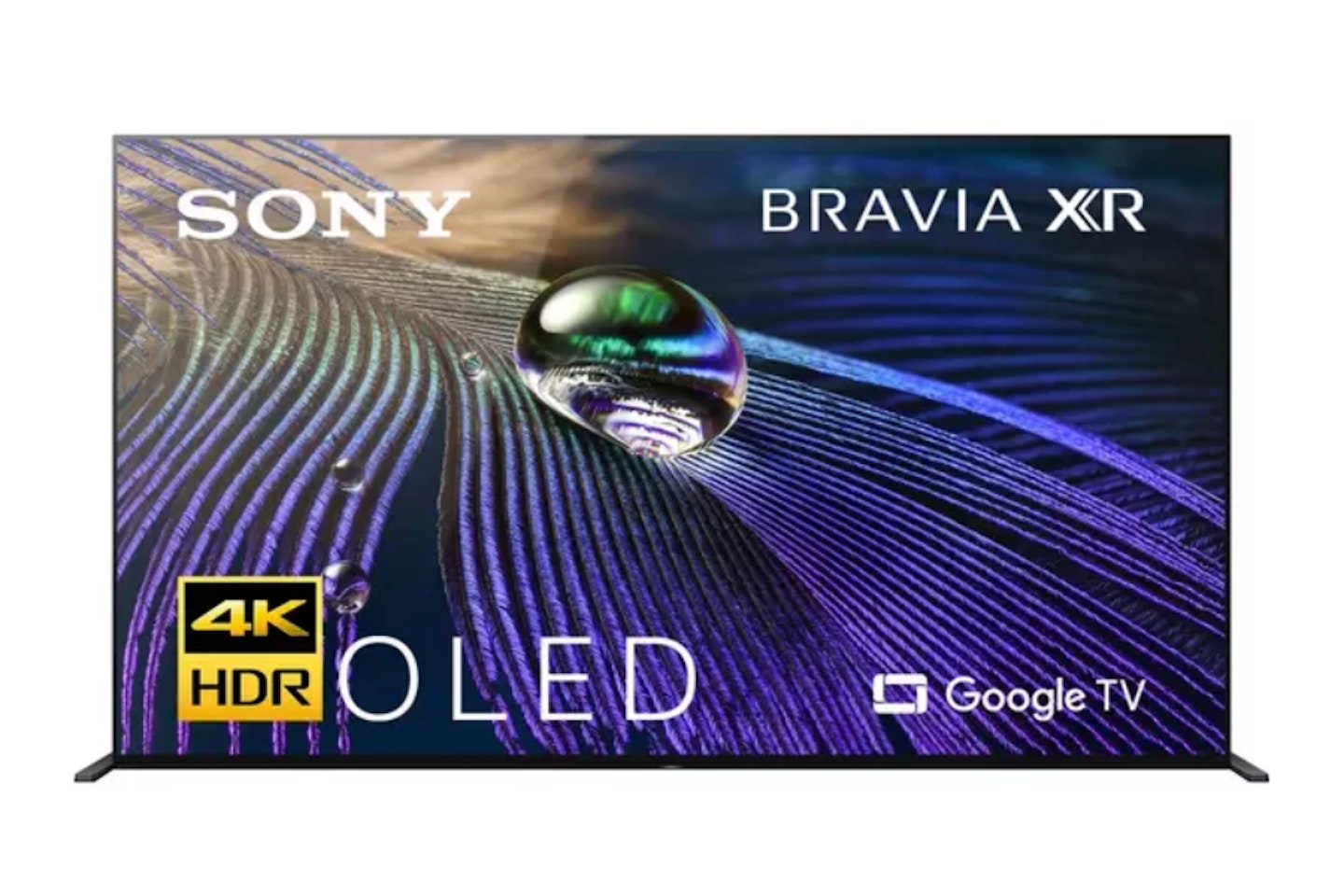
www.currys.co.uk
85-inch OLED screens are slightly scarce, partly owing to the costs involved in manufacturing an organic LED panel above 65-75-inch. But Sony has again come to our rescue as our top choice for serious movie fans and TV addicts. It’s perhaps understandable that this is actually a tad smaller, at 83 inches, but we don’t think you’ll notice by the time you’ve got this beast set up at home. This is of course a smart TV, so there’s access to the latest shows and 4K streaming content via the apps.
But the real benefit here lies with those little OLEDs. They bring you unparalleled contrast levels and authentic colour. You’ll become immersed in the scene that much more when you see the stunning colour depth and vibrancy of this HDR10 set.
An OLED TV means truer blacks, so when you pull those curtains and settle in for your late-night blockbuster you won’t be bothered by the pesky light-blooming that plagues standard LED TVs. The rare and welcome inclusion of Netflix Calibrated Mode, IMAX Enhanced and Dolby Vision means your viewing experience will be as close as possible to the film director’s intentions. Staples of the Sony XR range continue, with the inclusion of XR Motion Clarity for less blur, and XR Triluminos Pro for incredible colour depth and accuracy.
Get ready for some serious cinematic sound as well, as this 85-inch TV has Sony’s XR Sound Position, XR Surround Sound, and Acoustic Surface Audio+. The latter effectively turns the surface of the screen into a multi-directional speaker. The upshot of this is yet more realism, as sounds seem to emanate from their point of origin on the screen.
All-in-all, your movie nights will never be the same again after settling down in front of this truly cinematic hero.
Pros
- Netflix Calibrated Mode
- Amazing OLED panel
- Sony build quality and refined looks
Cons
- Doesn’t have the brightness of QLED
- At 83-inch, you could buy back the missing two inches with a true 85-inch model from another brand
The best 8K 85-inch TV
For such a large QLED TV, Samsung’s QN900B is super-slim - plus the screen is almost edge-to-edge, thanks to an equally slim bezel. Under the hood, we have HDR10+ support for an even wider HDR colour palette, 120hz variable refresh rate, and of course that all-important 8K resolution. Although there is a 2023 equivalent model, it's currently twice the price - so we think this is still the best 8K TV to be found at the moment.
Samsung is driving the QLED panel to the limit too, with their Quantum Matrix Technology PRO. This monitors every scene to get the kind of deep black and high contrast levels you’d normally find on an OLED set. Add to this dynamic upscaling for lower resolutions, and you have a serious detail boost on your hands.
Super surround sound and Dolby Atmos make for some truly enveloping audio; further enhanced by Object Tracking Sound Pro through 12 (yes, you read that right) internal multi-directional speakers. Samsung hasn’t stopped there though, as the new AI Sound technology analyses the acoustics of your room and compensates for background noise, such as passing traffic. Your old AV amplifier is going to feel sad and inferior when it sees this TV arrive on your wall.
This is undeniably expensive, and given the dearth of 8K content to enjoy at the moment, it might be a bit of an extravagance. But, with this much size and power in your living room, you’ll be future-proof for a long, long time.
Pros
- Incredible picture quality and resolution
- 8K AI processor
- Cutting-edge Samsung tech
- Infinity screen
Cons
- No Freeview Play app
- No Dolby Vision is a surprise at this level
- The lack of 8K content, outside of some game consoles, may make this an extravagant purchase
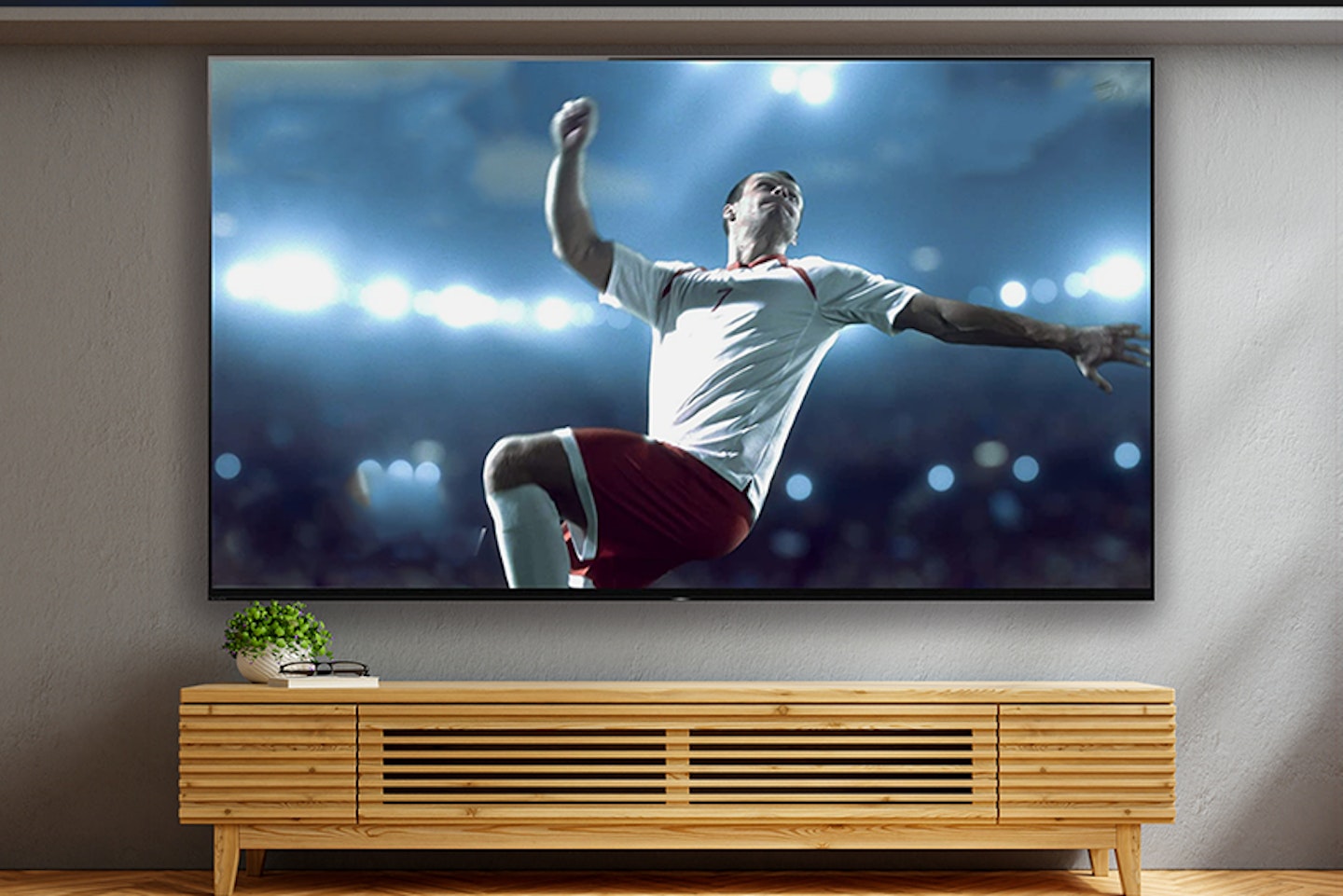
The best 85-inch TVs of 2023: Buyer's guide
Size and position
Just because you can drive that Mini into your living room doesn’t mean you should. Make sure that you have the room to ideally wall-mount an 85-inch TV. Any TV stand you may have had your eye on should, crucially, be able to take the weight.
Now you’ve squeezed this new set into place, can you actually sit and watch it comfortably? A quick rule of thumb is that you’ll need to be around 14.5 feet away for comfortable viewing, without straining your eyes or neck. There’s a more comprehensive look at this in our full article on choosing the right size TV.
You won’t exactly be spoiled for choice when you're on the hunt for the very best 85-inch TVs. After all - they are definitely in the ‘extravagant purchases’ section of the bank statement; At least there are some excellent TVs that cost under £600 for those without a humongous savings account. But, if you have the cash to splash, we’ve put our picks of the best 85-inch models into useful categories to help you select the right one for you. All of our recommendations are smart TVs too, so you’ll be streaming your favourite movies and shows in glorious 4K in no time.
A quick guide to panel types
Any 85-inch TV will have a resolution of 4K or higher. The main panel types commonly used in screens of this size are OLED, QLED, Mini LED and LED. As you’d expect, each has its plusses and minuses. When a TV screen reaches 80 inches or larger you’ll be hard-pushed to find one with inherently inferior display tech inside.
OLED
Organic LEDs don’t require a traditional backlight to create a bright enough picture; and therefore can be controlled individually, pixel by pixel. Therefore, OLED screens don’t produce that grey-ish lighting ‘bloom’ around bright objects, most obviously present on standard LED screens. Also, the viewing angle of OLED panels is wider than LED. Well-suited to movie buffs and gamers; the refresh rates are high, and black levels are super-deep with excellent sharp highlights.
QLED
QLED was initially developed by Samsung but is now offered by other manufacturers like Hisense and TCL. The ‘Q’ here indicates the presence of Quantum Dots instead of organic LEDs. These dots generate colours differently and the emitted light is stronger, so can produce brighter images and more intense, truer colours. But, they’re backlit separately, so control over blacks and highlights can lead to a slightly inferior contrast compared to OLED. We've got a guide to the best QLED TVs If you're interested in finding out more.
Mini LED
Miniature LEDs (Light Emitting Diodes) also deliver a very high-resolution alternative to OLED. As you’d expect, with more densely-packed LEDs also comes the ability to finely control brightness and contrast. Local dimming zones to drive deeper and truer blacks.
Once again, the overall brightness a Mini LED panel can throw out is a little better than OLED. This makes for more accurate HDR performance. But, Mini LEDs don’t have the near-infinite level of contrast that OLEDs have when turned off. So, depending on the model, you may see some light bleed between dark and light areas. The viewing angle is also significantly less than that of OLED.
Full Array LED
A Full Array screen has a corresponding ‘full array’ of backlighting LEDs behind each pixel. Whereas a standard LED screen will be backlit by rows of LEDs along its edges. Backlighting can be locally controlled, but it’s not as precise as OLEDs. It’s a slightly cheaper but excellent alternative technology to those above, which delivers a good qualitative balance between colour, brightness, contrast and resolution without necessarily beating the performance of other panels in each of those areas.

Best 85-inch TVs of 2023: Jargon buster
4K UHD
Picture quality can be measured by the number of pixels on the screen. A 4K (or Ultra High Definition) screen has roughly 4,000 pixels - around four times the number in a standard full HD display.
HDR and UHD
HDR stands for High Dynamic Range. As the name suggests, this is a huge enhancement and expansion of the colour range of your picture. Whites are brighter, blacks are blacker. It also accentuates light, detail and depth. HDR also delivers in excess of one billion colours. HDR comes in various versions - with HDR (HDR10), HDR10+, and Dolby Vision being progressively better than the one before.
HDMI 2.1
HDMI 2.1 is a digital audio-visual connection with enough bandwidth to support higher resolutions and refresh rates. This includes 4K UHD at 120fps and 8K UHD at 60fps.
Gamers, in particular, will probably want to look out for this feature as it means smoother gameplay. Especially If you want to unleash the Xbox Series X or PlayStation 5's true power.
Refresh rate and VRR
Refresh rate is the number of times the screen refreshes the entire image, per second. Measured in Hertz (Hz) a 60Hz TV will refresh an image 60 times, and a 120Hz TV will refresh an image 120 times. Therefore, the higher the refresh rate, the smoother the moving image appears to the eye. This is particularly important for gamers or those who watch fast-moving action like sports.
VRR, or variable refresh rate, also provides a huge boost for gamers. Often supported in various ways (such as Nvidia’s G-Sync, and AMDs FreeSync technologies) this means the TV will actively monitor the content that’s being displayed and vary the screen’s refresh rate accordingly. This makes for even smoother and more detailed motion depending on the scene or movement of your game.
Best 85-inch TVs of 2023: Frequently asked questions
Do 85-inch TVs cost a lot to run?
You may expect an 85-inch TV to be proportionally more expensive to run than a 50-inch TV. But, the good news is that running costs are more to do with the internal circuitry and are not all down to the size of the panel. Many TVs are 50 inches or larger these days, so you’re unlikely to notice a huge hike in your energy bill by upgrading to an 85-inch set. If you want to find out more about power consumption, check out the energy label for the TV and go from there.
What size is an 85-inch TV?
So, what are the dimensions of an 85-inch TV? Well, it will vary. This measurement is taken diagonally, corner to corner. This doesn’t include any bezel around the screen. Read the specifications of your chosen TV for exact dimensions. Remember, the horizontal width of your TV will be a little less than 85 inches, and any listed dimensions may or may not take the stand into account.
Chris Duffill is a Tech Product Writer for What's The Best. He specialises in audiovisual, computing, and gadgets. He also writes for Yours.
Subscribe to the What’s The Best Newsletter to keep up to date with more of the latest reviews and recommendations from the rest of the What’s The Best team.
